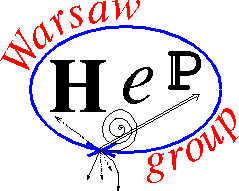SEMINARIUM FIZYKI WIELKICH ENERGII
Dnia 12 kwietnia (piątek) o godzinie 10:15, w sali B2.38 odbędzie się seminarium, na którym zostanie wygłoszony referat pt.:
„T2K+NOvA Joint Neutrino Oscillation Analysis”
Referuje: dr Tomas Nosek (NCBJ)
The T2K and NOvA experiments are the two currently active long-baseLine (LBL)
experiments to measure the phenomenon of neutrino oscillations. This talk presents a
joint T2K+NOvA neutrino oscillation analysis within the standard three active neutrino
flavors paradigm, which includes each experiment’s fully detailed detector simulations
and takes advantage of the complementary oscillation baselines of 295 km and
810 km and neutrino energies around 0.6 GeV and 2 GeV for T2K and NOvA, respectively.
The T2K and NOvA collaborations have worked together on a joint analysis
of the two experiments’ data, hoping to use the differing physics sensitivities to paint
the clearest picture of neutrino oscillations from LBL experiments. Within a unified
Bayesian inference, the results from the first T2K+NOvA joint neutrino oscillation
measurement will be discussed.
Serdecznie zapraszamy
dr hab. Katarzyna Grzelak
prof. dr hab. Aleksander Filip Żarnecki

